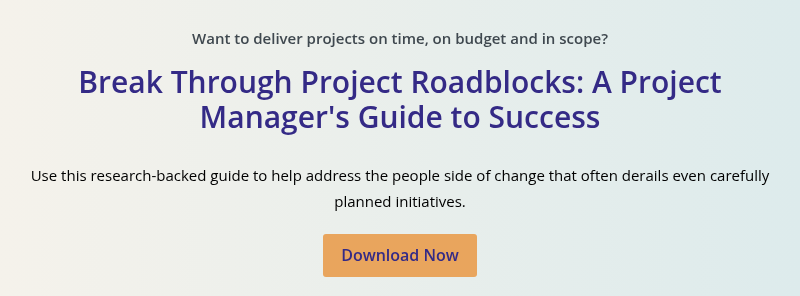Workforce Transformation: Definition, Types and Challenges

7 Mins
Updated: July 11, 2025
Published: October 1, 2024

Organizational change demands transformation within the workforce, yet 43% of employees report that their organizations are unprepared to manage change effectively.
Workforce transformation is a strategic necessity. It can empower your organization and people to become more agile and flexible, and equip teams with skills to drive your organization forward.
In this article, we define workforce transformation, explore its different types, and examine the challenges organizations face when implementing it, along with strategies to overcome them.
What Is Workforce Transformation?
A workforce transformation reshapes an organization’s structure, culture and skills to meet changing business goals and technology. It modernizes the workforce to meet emerging challenges, integrating new technologies, upskilling employees, and driving cultural and structural shifts.
When implemented successfully, workforce transformation can create a more engaged, agile and resilient workforce, enabling organizations to stay competitive in dynamic environments. Change management is essential in this process, providing the tools and support employees need to thrive during transitions. Prosci research confirms that organizations with strong change management practices are significantly more likely to meet their objectives.
Correlation Between Effective Change Management and Success

Why Organizations Undergo Workforce Transformations
Organizations embark on workforce transformations to address strategic needs and secure long-term success. Here are key reasons why they pursue such transformations:
- Enhancing productivity – For example, introducing automation and digital tools can reduce manual workloads, freeing employees to focus on strategic, creative tasks that boost productivity.
- Increasing agility – Some organizations embark on a workforce transformation to become more agile, allowing them to respond swiftly to market changes and seize new opportunities. By optimizing their structure and creating cross-functional teams, organizations can pivot quickly and innovate effectively.
- Boosting employee engagement – Some transformations aim to reshape organizational structure, culture and processes to foster an environment where employees feel connected, valued and motivated. Enhanced engagement reduces absenteeism by 78%, increases profitability by 23%, and reduces safety incidents by 63%.
- Reducing operational costs –Transformations that streamline processes, integrate automation, and strategically reallocate resources can lead to significant cost savings. This approach enhances efficiency, minimizes labor costs and improves resource allocation.
- Strengthening customer relationships – A workforce transformation that builds a skilled and responsive workforce enhances customer service, drives product innovation to meet evolving needs, and improves customer engagement, fostering lasting loyalty.
- Attracting and retaining talent – Top talent is drawn to companies that prioritize employee development and embrace technology. Undergoing a workforce transformation to offer growth opportunities and flexibility can attract quality talent and enhance retention.
In essence, workforce transformation is a strategic initiative that enables organizations to harness their human and technological resources, ensuring they remain competitive and thriving in a rapidly changing market.
Types of Workforce Transformation
Workforce transformation strategies vary based on organizational goals and challenges. Below are five key types of workforce transformation and their impacts:

1. Organizational transformation
An organizational transformation is a comprehensive and strategic process through which an organization undergoes significant changes to its structure, operations, culture and strategies to achieve substantial performance improvements and adapt to new market conditions or technological advancements. This transformation aims to align the organization more closely with its business goals and external environment, ensuring long-term sustainability and competitiveness.
During an organizational transformation, employees undergo multiple smaller interdependent change initiatives. To prepare and support them during these changes, organizations need a comprehensive change management methodology. This methodology must be adaptable and repeatable across different types and sizes of change.
The Prosci Methodology, a structured approach to change management, enables successful change implementation by cultivating a culture of adaptability among employees. It helps gain leadership commitment and prevent resistance by proactively identifying and addressing the barriers to change.
Our research highlights the importance of managing change through a structured approach, with 59% of change professionals who applied a specific methodology achieving good or excellent levels of change management effectiveness.
Impact of Use of a Methodology on Overall Change Management Effectiveness

2. Digital workforce transformation
Digital workforce transformation involves incorporating digital technologies across the organization to improve its operations and deliver value to customers. Businesses commonly use digital transformation to implement AI, cloud computing, data analytics, and the Internet of Things (IoT) to transform services and processes.
This type of workforce transformation is a comprehensive process that involves updating analog or outdated operations. It requires a change in organizational culture. Teams must focus on both the digital solutions and the people side of change to successfully overhaul business processes and operations.
A standardized change management approach is essential for effective digital transformation. It facilitates the adoption of new work methods, job roles and organizational culture. This common approach enhances communication by establishing a shared language, reduces the learning curve through consistent training, and ensures uniform application of practices across various projects and divisions. Additionally, it promotes efficient use of resources, fosters continuous improvement by leveraging shared insights, and eliminates inefficiencies associated with redundant problem-solving. Ultimately, it creates a more cohesive and innovative organizational environment.
To enable this, Prosci has a network of 100+ expert Change Advisors and Executive Instructors who can guide organizations to success with large-scale initiatives. The Prosci Methodology and its models provide a structured, repeatable process for planning and implementing massive digital transformations.
Our success stories showcase our expertise in this field — for example, the overhaul of the payroll system at Texas A&M University (TAMU) and the ERP transformation of a municipal government.
3. Leadership transformation
Leadership transformation involves restructuring hierarchies, leadership strategies or leadership roles. It may also include creating cross-functional teams, decentralizing decision-making, and empowering employees to respond quickly to challenges.
Prosci change management resources can be instrumental during leadership transformations.
For example, when a new interim CEO takes the helm, the Prosci Methodology can help stabilize the transition period by ensuring that the new leader effectively communicates with and leads the impacted individuals.
As a change practitioner, human resources professional, or leader, you can use the Prosci ADKAR®Model, integral to our methodology, to create change management strategies that help employees adapt to the interim CEO's transition.
4. Cultural transformation
A cultural transformation is a shift in an organization's corporate culture. It involves changing the core values, behaviors, norms and practices of the current workforce to support new strategic directions or to improve efficiency.
Cultural transformation ensures that the work environment supports and drives current and future changes. It requires employees to develop their skills and adopt new mindsets.
This human capital workforce transformation requires change management frameworks like the Prosci 10 aspects of change impact to understand how the culture shift affects employees. You can also use our ADKAR Model to manage the individual transitions required to achieve business outcomes.
5. Process transformation
Process transformation, or business process reengineering (BPR), is the fundamental rethinking and redesign of one or more core processes. It dramatically improves critical performance measures like cost, efficiency, quality and service.
Workforce transformation initiatives of this type aim to eliminate outdated, inefficient or redundant processes and replace them with optimized procedures to improve business operations.
As a change professional, you would analyze core processes to gauge performance levels, redesign them, and implement new processes to improve efficiency.
You can use change management approaches and the Prosci 3-Phase Process to create a strategy that addresses key areas of the reengineering process. This includes acquiring leadership support, developing employee skills, and preventing resistance.
Successful transformation requires careful planning, active leadership and a structured approach to change management. Organizations that anticipate and address common obstacles early are better positioned to achieve their goals. Let’s explore four key challenges that organizations often face during workforce transformation and strategies to overcome them.
The Challenges of Workforce Transformation
There are four significant challenges while executing a workforce transformation project. Let’s discuss what they are and how change teams can overcome them:
1. Lack of leadership commitment
Effective transformation starts at the top. Leaders who serve as sponsors must provide active and visible support during change initiatives for them to succeed.
Contributors to Success Over Time

A sponsor authorizes and oversees the transformation to ensure it achieves the intended benefits. They champion the change and influence peers and employees to participate in it.
Good leaders also communicate with the project management and change management teams to ensure alignment during implementation.
When transformation leaders fail to fulfill their role effectively, there is ambiguity about the transformation’s goals and the path to achieve them, resulting in fragmented efforts and poor momentum.
Leaders also include people managers who work closely with impacted people. They are instrumental to the change initiative's success, to the extent that a Gallup report recently found managers account for 70% of the variance in team engagement.
2. Resistance to change
Resistance is a natural response to change. When employees learn about a transformation, they may respond with anxiety and fear caused by a lack of understanding of the reason behind the change or lack of clarity about their roles and job security.
To prevent this resistance, you can use the Prosci Methodology. Specifically, the Prosci ADKAR Model for individual change proactively identifies and addresses the barriers to change that cause employee resistance before the symptoms appear.
Prosci ADKAR Model

The first two elements of ADKAR, Awareness and Desire, are crucial for preventing resistance. Awareness helps people understand why the change is needed by explaining the business factors behind it and the risks of not changing. This prepares employees for the transition.
Building Desire creates the motivation to support the change at the individual level. By highlighting the personal and organizational benefits of the change, people are more able to embrace and participate in the change. You also build Desire by involving stakeholders early in the transition process.
Leadership support, coaching and addressing resistance help ensure transformation success.
3. Inadequate training and development
There can be a significant gap between the current workforce's skillsets and the skills required in the new setup. To develop these skills, employees must understand what to change and how to perform it. The Knowledge element of our ADKAR Model identifies the skills and behaviors needed to support the change.
To educate people, you can design training programs, use job aides, and get access to troubleshooting guidance.
Ability teaches employees how to put knowledge into practice through hands-on coaching, expert resources and performance monitoring. These tactics help them demonstrate the new skills or behaviors at the required level to improve organizational performance.
For successful workforce transformation, training programs and coaching must go beyond teaching technological capabilities and include developing soft skills like adaptability, problem-solving and collaboration.
When people have all these elements ADKAR elements, the workforce is adequately skilled to perform well in the transformed workplace.
Change practitioners must create a culture of continuous learning and provide adequate time and resources for employees to learn. Rushed training can lead to poor change adoption as employees struggle to gain new skills.
4. Sustaining the transformation
Even with successful initial implementation, sustaining a workforce transformation over the long term is challenging, especially in organizations with limited time and resources.
Without regular evaluation, transformations may lose the benefits of the change and fall behind technological or business advancements.
To overcome this, change teams should plan Reinforcement activities to embed the change into the organization’s culture. Activities for sustaining change include rewards, recognition, celebration, performance measurement and corrective mechanisms.
Prosci Workforce Transformation Solutions
Achieving a successful workforce transformation that results in an adaptable and resilient organization is imperative. Organizations that don’t embrace innovation, and change with it, will ultimately lag behind those who do. But a workforce transformation is a complex task that’s hard to measure—because it’s all about people and their mindset. It demands a robust change management framework that can guide individuals and the whole organization through the change.
Prosci has been delivering successful workforce transformations for more than thirty years. As experts in the people side of change, we help your teams achieve results today while imparting the capabilities you need to make every change an opportunity.




